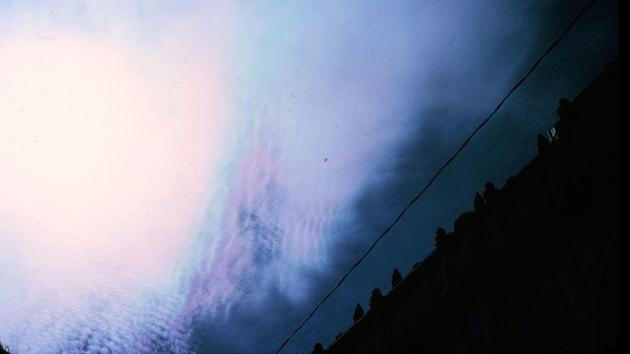

Contact: Manager Yang
Hotline: 950-4048-3964 (free)
Tel: 0510-85386636
Mobile: 18011518665
Shangmeng Technology Wuxi Co., Ltd.
Address: A1-602, Tianan Smart City, No. 228 Linghu Avenue, Xinwu District, Wuxi City, Jiangsu Province
Sina Technology News Beijing time on January 11th news, according to foreign media reports, you must know that the water's freezing point is 0 degrees Celsius, but this is not the lowest temperature that water can reach. The name of the water below freezing is called “ultra-low temperature water”. Recently, scientists in several laboratories have created the lowest temperature water.
A research team successfully reduced the temperature of the liquid water to 230 Kelvin, while the other achieved a score of 228 Kelvin (approximately minus 45 degrees Celsius). This single is already very cool from a scientific point of view, because the research in the field of "ultra-low temperature" is very difficult. But not only this: water has bizarre characteristics and is of great significance to helping us understand the planet. In addition, water sometimes violates the rules we learned in middle school textbooks: water on Earth can be as low as minus 35 degrees Celsius, yet still remain liquid. And at such low temperatures, the singularity of water can become even more peculiar. In fact, near this temperature range, water can reach the so-called "singularity".
"Which form of singularity the water can achieve, this is still an unsolved mystery that has inspired people to come up with a variety of contradictory theories." Claudia Goy, Ph.D. student, Institute of Nuclear Physics, University of Frankfurt The research team led by Claudia Goy) wrote in the paper. Another team of scientists from Sweden, South Korea and Japan may have reached this singularity and published a paper in Science last week.
It should be noted here that physicists only use temperature to describe the average kinetic energy level of a group of molecules. In general, the less the movement and vibration of the molecule, the lower the temperature. So this is not the same as the low temperature in the Arctic Circle, but a system used by physicists to describe the behavior of a group of particles.
Whether these molecules "freeze into ice" or form crystals depends on other factors. Condensation nodules need to be formed first, and then gradually attract other molecules. Water can form crystals below freezing, but scientists can avoid crystal formation through special systems. In addition, water also has some properties that are different from other liquids, such as increased volume when icing, and other liquids generally do not.
 The picture shows a beautiful iridescent color presented by a group of ultra-low temperature clouds.
The picture shows a beautiful iridescent color presented by a group of ultra-low temperature clouds.
Both teams make ultra-low temperature water by spraying tiny droplets into a vacuum. The smaller the droplet, the lower the minimum temperature at which the liquid can be maintained, and the lower the possibility of crystallization. By reducing the volume of the droplets, more liquid can be exposed to the vacuum, creating a special vacuum cooling phenomenon. Simply put, reducing the pressure allows the surface particles to evaporate quickly, taking away the heat of the droplets and achieving rapid cooling. The temperature measurement results show that the temperature of these droplets is extremely low.
It is equally difficult to measure temperature. Both experiments used laser pulses to measure the temperature at which droplets move and evaporate in a vacuum. By analyzing the change in diameter of the water droplets before and after leaving the nozzle, the researchers can get a value and convert it to temperature using a mathematical formula.
It looks like it's a detour, but "you can't put the thermometer on the edge of the drop and easily measure the temperature." Renato Torre of the European Nonlinear Spectroscopy Laboratory pointed out (he did not participate in the study). He believes that the temperature measurement methods used by researchers can support their research conclusions. In addition, he also speculated that this may lead the scientific community to explore "whether the temperature measurement method is the most reliable in such experiments."
As for the singularity problem, the team that successfully lowered the water temperature to 228 Kelvin noticed some peculiar phenomena: water seems to have two densities at the same time, depending on how the water molecules connected in the water droplets are distributed. Computer models show that this surprising study may explain the unique density variation of water.
Paola Gallo of the University of Rome in Rome, Italy, said in a commentary in Science that the experiment is of great significance. But Alan Soper of the Rutherford Appleton Laboratory in the United Kingdom believes that the study cannot draw detailed conclusions, and that the changes observed by the team may be the sign that water begins to crystallize. “Their observations are very interesting,” he said. “But we may not be able to explain the cause of the phenomenon straightforwardly.”
In any case, the importance of water is self-evident. Clouds in the sky, human tissue... Water is everywhere. To understand the various phenomena on the earth, it is also impossible to get rid of the water. On the way to exploring the limits of water, scientists are just getting started.
Source: Sina Technology
Previous: As fast as lightning scientists develop new DNA nanobots
下一条: Progress in commercialization of graphene-based electronic wearable textiles
Address:Tianan Smart City A1-602, No. 228 Linghu Avenue, Xinwu District, Wuxi, Jiangsu, China TelePhone:0510-85386636 Fax:0510-85384339 E-mail:info@solmontech.com
KeyWord: